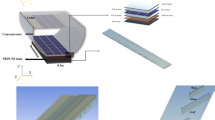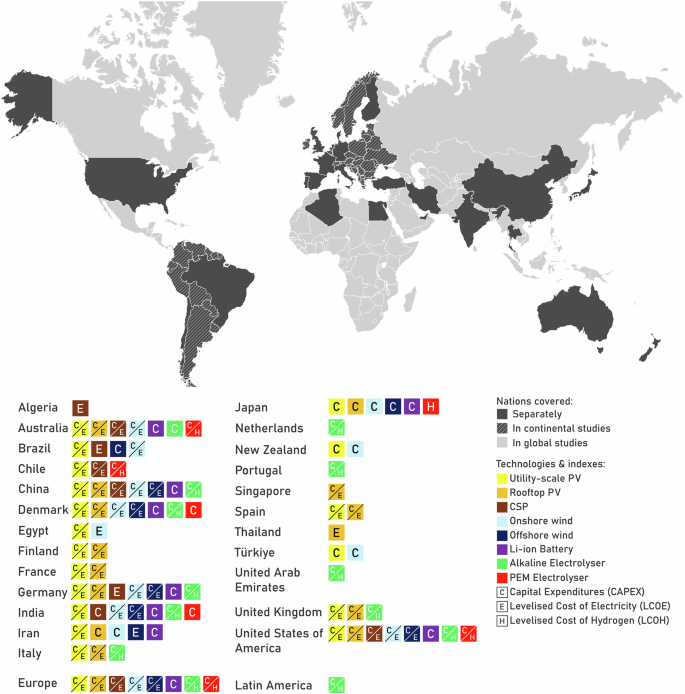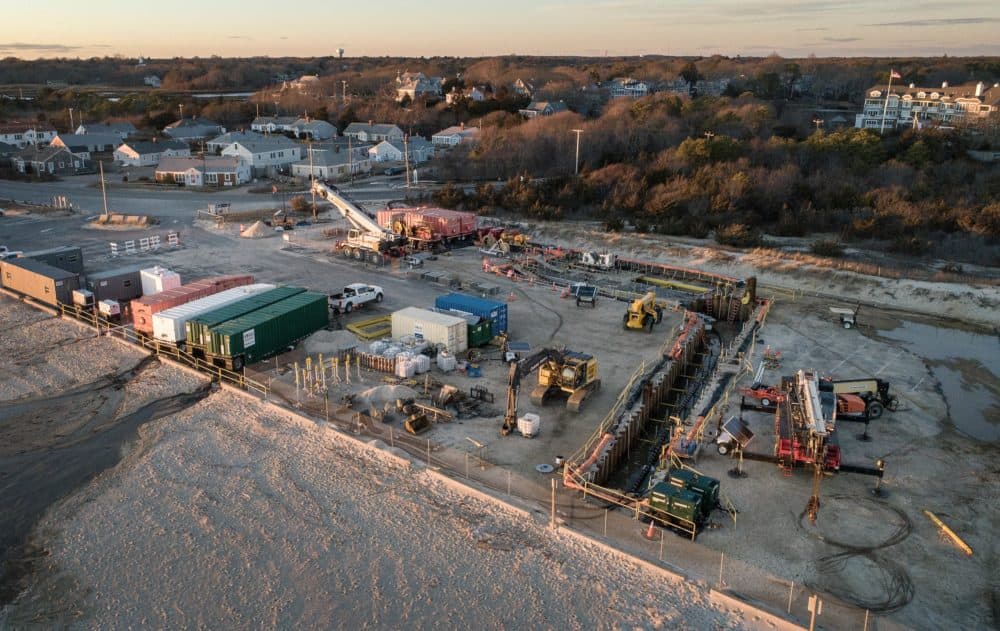Report on Model Predictive Control for Solar Parabolic Trough Plants
Executive Summary
This report details an investigation into optimizing the performance of solar parabolic trough collector (PTC) systems, a critical technology for achieving Sustainable Development Goal 7 (Affordable and Clean Energy) and SDG 13 (Climate Action). The study addresses the challenge of maintaining stable energy output from PTCs, which are subject to nonlinear behavior and disturbances from variable solar irradiance. A meteorological disturbance model, based on local climate data from Tamil Nadu, India, was developed to simulate realistic operational challenges. The performance of three distinct control schemes—Proportional-Integral-Derivative (PID), Predictive Functional Control (PFC), and Model Predictive Control (MPC)—was evaluated. The findings conclusively demonstrate the superiority of the MPC strategy, which effectively regulated the collector’s outlet temperature by limiting peak overshoot to 6.67% with a settling time of 3600 seconds. In contrast, PID and PFC schemes exhibited significantly higher overshoots of 43.33% and 25%, respectively. The implementation of MPC offers a robust solution for enhancing the efficiency, reliability, and stability of solar thermal power plants, thereby accelerating the transition to clean energy and supporting national and global sustainability targets.
1.0 Introduction: Aligning Energy Policy with Sustainable Development Goals
The global transition towards renewable energy is fundamental to achieving the United Nations Sustainable Development Goals (SDGs). This shift is driven by the urgent need to mitigate climate change (SDG 13), ensure access to clean energy (SDG 7), and promote sustainable industrialization (SDG 9).
1.1 India’s Commitment to a Sustainable Energy Future
India has established ambitious targets to align its energy sector with global sustainability efforts, including the goal of achieving 500 gigawatts of non-fossil fuel energy capacity by 2030. Solar energy, being clean, abundant, and pollution-free, is central to this strategy. Concentrated Solar Power (CSP) technologies, particularly Parabolic Trough Collectors (PTCs), are identified as key contributors due to their potential for large-scale, reliable power generation, which directly supports:
- SDG 7 (Affordable and Clean Energy): By expanding the portfolio of renewable energy sources and reducing reliance on finite fossil fuels.
- SDG 13 (Climate Action): By providing a zero-emission alternative to carbon-intensive power generation, thus contributing to national energy security and climate resilience.
2.0 National and Regional Context for Solar Energy Deployment
2.1 The National Drive Towards SDG 7: Overcoming Fossil Fuel Dependency
India’s historical reliance on coal for power generation has created significant challenges that conflict with sustainable development objectives. These challenges include:
- Environmental Degradation: Coal mining and combustion lead to land degradation, water contamination, and significant greenhouse gas emissions, undermining SDG 13.
- Public Health Risks (SDG 3): Air pollution from coal-fired power plants is a major contributor to respiratory illnesses and other health issues in urban centers.
- Energy Insecurity: Dependence on finite resources and volatile import markets threatens long-term energy stability.
The development of India’s vast solar potential, estimated at approximately 750 GW, presents a direct pathway to mitigate these issues and advance towards a sustainable and equitable energy system, particularly for the 100,000 villages still lacking electricity, a key target under SDG 7 and SDG 11 (Sustainable Cities and Communities).
2.2 Case Study: Tamil Nadu’s Role in Sustainable Energy
The state of Tamil Nadu, despite having high CO2 emissions, has demonstrated a commitment to renewable energy through its “Vision Tamil Nadu 2023” initiative. With significant solar potential, including an average Direct Normal Irradiance (DNI) suitable for CSP, the state is positioned to be a leader in India’s clean energy transition. Investing in solar thermal power in this region supports:
- The reduction of regional carbon footprints (SDG 13).
- The creation of a diversified and resilient energy grid (SDG 9).
- The promotion of green economic growth and innovation (SDG 8).
3.0 Technological Framework and Control Challenges
3.1 Parabolic Trough Collector (PTC) Systems
PTC systems are a mature CSP technology that concentrates solar radiation to heat a fluid, which in turn drives a conventional power block to generate electricity. The primary challenge in operating these systems is managing the inherent variability of the solar resource. Fluctuations in solar irradiance due to cloud cover and other atmospheric conditions cause disturbances that can compromise the plant’s efficiency and stability.
3.2 The Control Problem: Ensuring Reliability for Sustainable Infrastructure (SDG 9)
The core control objective for a PTC plant is to maintain the outlet temperature of the heat transfer fluid at a constant, optimal setpoint. Achieving this requires a sophisticated control system that can rapidly adjust the fluid’s flow rate to compensate for disturbances. This technological challenge is directly linked to SDG 9 (Industry, Innovation, and Infrastructure), as a reliable and efficient control system is essential for making solar thermal power a dependable component of modern, sustainable energy infrastructure.
4.0 Methodology: Advanced Control for Enhanced Sustainability
This study focused on developing and validating an advanced control system to improve the performance of PTC plants under realistic weather conditions.
4.1 Development of a Meteorological Disturbance Model
A state-space weather disturbance model was developed using historical climate data (2017-2022) from Tiruchirappalli, Tamil Nadu. This model accurately represents local variations in cloud cover and DNI, allowing for a robust evaluation of control strategies under conditions that reflect real-world operational challenges.
4.2 Comparative Analysis of Control Strategies
The performance of the PTC system was simulated under the influence of the weather disturbance model using three different control algorithms:
- Proportional-Integral-Derivative (PID) Control: A conventional, widely used industrial controller.
- Predictive Functional Control (PFC): An advanced model-based control strategy.
- Model Predictive Control (MPC): An advanced control method that uses an explicit process model to predict future plant behavior and optimize control actions.
5.0 Results and Analysis
5.1 Performance Evaluation of Control Systems
The simulation results demonstrated a clear performance hierarchy among the tested controllers. The primary goal was to track a changing temperature setpoint while rejecting weather-induced disturbances.
- PID Control: Showed the poorest performance, with a peak overshoot of 43.33% and a delayed response in reaching the target temperature.
- PFC Control: Provided a faster transient response but at the cost of a significant overshoot of 25%.
- MPC Control: Delivered superior performance with the lowest peak overshoot (6.67%) and a stable, consistent response. It effectively balanced disturbance rejection, settling time, and tracking accuracy.
5.2 Key Findings on System Stability and Efficiency
The analysis of transient characteristics confirmed the advantages of the MPC framework. The state-space-based weather disturbance model, when paired with the MPC controller, yielded the best results:
- Superior Tracking: The MPC system maintained the closest adherence to the desired temperature setpoints.
- Enhanced Stability: The MPC controller demonstrated robust stability and effectively managed the system’s nonlinear dynamics.
- Optimal Error Minimization: Evaluation of performance indices (IAE, ISE, ITAE) confirmed that the MPC scheme provided the most optimal performance by minimizing the error of the outlet oil temperature.
These improvements in operational efficiency and reliability are crucial for ensuring that solar thermal plants can contribute effectively to grid stability, a key requirement for achieving SDG 7.
5.3 Economic and Environmental Viability (SDG 8 & SDG 13)
An economic analysis of a proposed 10 MW PTC plant in Tamil Nadu indicates strong viability. With a projected Levelized Cost of Electricity (LCOE) of ₹5.4 per kWh and a payback period of 9-11 years, the project is economically attractive and supports SDG 8 (Decent Work and Economic Growth). Environmentally, the plant is projected to mitigate 10,800 metric tons of CO₂ emissions annually, making a direct contribution to SDG 13 (Climate Action).
6.0 Conclusion and Recommendations
6.1 Summary of Findings
This report validates that Model Predictive Control (MPC), integrated with a realistic, data-driven weather disturbance model, is a highly effective strategy for optimizing the performance of solar parabolic trough power plants. The MPC framework significantly outperforms conventional PID and PFC controllers in terms of temperature regulation, disturbance rejection, and overall system stability.
6.2 Implications for Sustainable Development
The adoption of advanced control technologies like MPC is a critical step towards realizing the full potential of solar thermal energy. By enhancing the efficiency and reliability of these systems, such innovations directly support the achievement of multiple SDGs. It is recommended that further research and development focus on scaling this approach to larger collector fields and integrating more complex meteorological data to further enhance plant performance. Doing so will be instrumental for India in meeting its ambitious renewable energy targets and contributing to a global sustainable energy future.
Analysis of Sustainable Development Goals in the Article
1. Which SDGs are addressed or connected to the issues highlighted in the article?
The article on developing a model predictive control system for a solar parabolic trough plant in India addresses several Sustainable Development Goals (SDGs). The primary focus on renewable energy technology, its implementation, and its benefits directly connects to goals concerning energy, climate, health, and sustainable infrastructure.
- SDG 7: Affordable and Clean Energy: This is the most central SDG to the article. The entire paper is dedicated to improving the efficiency and reliability of solar energy, a key source of clean energy. It discusses India’s national goals for increasing non-fossil fuel energy capacity and the potential of solar power to meet these targets.
- SDG 13: Climate Action: The article explicitly frames the shift to renewable energy as a response to “the progressively unsettling properties of climate change.” It highlights that solar generation is “clean, pollution free” and that moving away from coal-fired power plants will “lower GHG emissions” and help in the “mitigation of climate change.”
- SDG 9: Industry, Innovation, and Infrastructure: The core of the research is an innovation in industrial control systems to make solar energy infrastructure more efficient and stable. By developing and evaluating advanced control methods like Model Predictive Control (MPC), the study contributes directly to creating more resilient and sustainable infrastructure. The mention of solar-powered telecom towers also relates to this goal.
- SDG 3: Good Health and Well-being: The article connects the use of coal-fired power plants to significant negative health impacts. It states that these plants “produce a considerable quantity of particle air pollution” and that switching to renewable energy can avoid the associated “health risks.” This directly links clean energy adoption to improved public health.
- SDG 11: Sustainable Cities and Communities: By addressing the issue of “air pollution in major cities, which are largely caused by coal-fired power stations,” the article supports the goal of making human settlements safer and more sustainable. Furthermore, it mentions the potential for renewable energy to serve as “off-grid electricity” for the 100,000 Indian villages still without power, contributing to inclusive and sustainable rural communities.
2. What specific targets under those SDGs can be identified based on the article’s content?
Based on the article’s discussion of India’s energy policies, environmental concerns, and technological advancements, several specific SDG targets can be identified:
- Target 7.2: Increase substantially the share of renewable energy in the global energy mix.
- Explanation: The article directly references India’s national objectives that align with this target. It states, “India hopes to reach 500 gigawatts of non-fossil fuel power by this decade” and mentions the goal “to raise the nation’s proportion of non-fossil-base mounted electric capacity to 40% by 2030.” The entire study aims to make solar technology more viable to achieve this increased share.
- Target 7.a: Enhance international cooperation to facilitate access to clean energy research and technology…and promote investment in energy infrastructure and clean energy technology.
- Explanation: This academic paper itself is a contribution to clean energy research and technology. By developing and validating an “advanced meteorological disturbance model” and a “model predictive control system,” the research facilitates the advancement and adoption of more efficient solar power technology, which is crucial for promoting investment.
- Target 13.2: Integrate climate change measures into national policies, strategies and planning.
- Explanation: The article highlights “India’s INDC (Intended Nationally Determined Contribution)” which “sets a new objective to raise the nation’s proportion of non-fossil-base mounted electric capacity to 40% by 2030.” This is a clear example of a national policy and strategy designed to integrate climate change mitigation into the country’s energy planning.
- Target 9.4: Upgrade infrastructure and retrofit industries to make them sustainable, with increased resource-use efficiency and greater adoption of clean and environmentally sound technologies.
- Explanation: The research focuses on optimizing the performance of parabolic trough collectors, a key component of solar thermal power plants. The comparison of control schemes (PFC, PID, MPC) to find the most efficient method for regulating temperature and rejecting disturbances is a direct effort to upgrade the technology for greater efficiency and reliability, which is a core aspect of this target.
- Target 3.9: Substantially reduce the number of deaths and illnesses from…air…pollution and contamination.
- Explanation: The article explicitly states that India’s “coal-fired power conveniences produce a considerable quantity of particle air pollution” and that by “switching to renewable energy sources…health risks associated with these facilities can be avoided.” This directly links the adoption of solar technology, as explored in the paper, to the reduction of illnesses caused by air pollution.
3. Are there any indicators mentioned or implied in the article that can be used to measure progress towards the identified targets?
Yes, the article mentions several quantitative and qualitative indicators that can be used to measure progress towards the identified targets.
- Indicator for Target 7.2 (Renewable Energy Share):
- Specific Data: The article provides concrete figures for measuring progress, such as India’s goal to achieve “500 gigawatts of non-fossil fuel power” and increase the share of non-fossil fuel capacity to “40% by 2030.” The installed generation capacity figures for India and Tamil Nadu (Figs. 1 and 2) serve as a baseline. The estimated annual energy output of the proposed plant (“11,956 MWh”) is another indicator of capacity addition.
- Indicator for SDG 13 (Climate Action):
- Specific Data: The article quantifies CO2 emissions and their reduction potential. It mentions that telecom towers produce “5.3 million tones of CO2” annually and that the proposed 10 MW solar plant is “expected to mitigate nearly 10,800 metric tons of CO₂ emissions per year.” This provides a direct metric for measuring climate action impact.
- Indicator for Target 9.4 (Technological Innovation and Efficiency):
- Specific Data: The study uses specific technical performance metrics to evaluate the efficiency of the new control system. These include “peak overshoot” (reduced to 6.67% with MPC), “settling time” (3600 s), and “root mean square error (RMSE)” of 2.8 °C for outlet temperature prediction. These are direct indicators of technological improvement and resource-use efficiency in the energy sector.
- Indicator for Target 7.1 (Energy Access):
- Specific Data: The article provides a baseline indicator for energy poverty by stating that “of the 600,000 villages in India, about 100,000 are still without electricity.” Progress can be measured by the reduction in this number, partly through the deployment of off-grid solar solutions mentioned in the text.
4. Summary Table of SDGs, Targets, and Indicators
| SDGs | Targets | Indicators Identified in the Article |
|---|---|---|
| SDG 7: Affordable and Clean Energy | 7.2: Increase substantially the share of renewable energy in the global energy mix. | – National goal of 500 GW of non-fossil fuel power. – Target of 40% non-fossil-based electric capacity by 2030. – Annual energy output of solar plants (e.g., 11,956 MWh for the proposed plant). |
| SDG 13: Climate Action | 13.2: Integrate climate change measures into national policies, strategies and planning. | – Reduction of GHG emissions. – Mitigation of CO2 emissions (e.g., 10,800 metric tons per year from the proposed plant). – India’s INDC as a national climate strategy. |
| SDG 9: Industry, Innovation, and Infrastructure | 9.4: Upgrade infrastructure and retrofit industries to make them sustainable, with increased resource-use efficiency and greater adoption of clean technologies. | – Technical performance metrics of control systems: peak overshoot (6.67%), settling time (3600 s), RMSE (2.8 °C). – Development of advanced models (weather disturbance model, MPC). |
| SDG 3: Good Health and Well-being | 3.9: Substantially reduce the number of deaths and illnesses from air pollution. | – Implied reduction of “particle air pollution” from coal plants. – Avoidance of “health risks” associated with fossil fuel power generation. |
| SDG 11: Sustainable Cities and Communities | 11.6: Reduce the adverse per capita environmental impact of cities, including by paying special attention to air quality. | – Reduction of air pollution in major cities caused by coal-fired stations. – Number of villages without electricity (100,000) as a baseline for improving rural infrastructure. |
Source: nature.com






